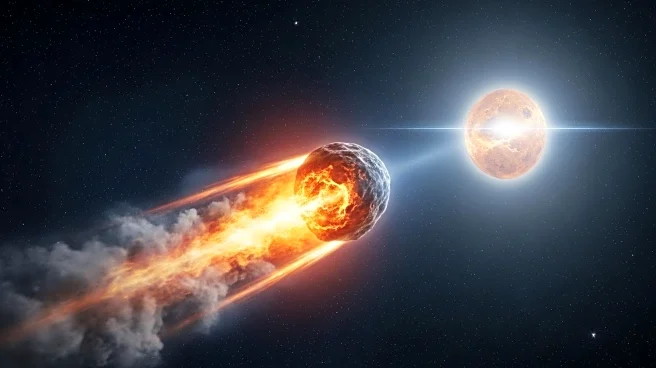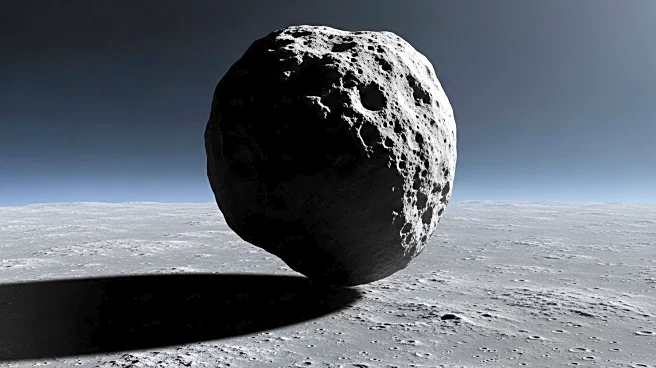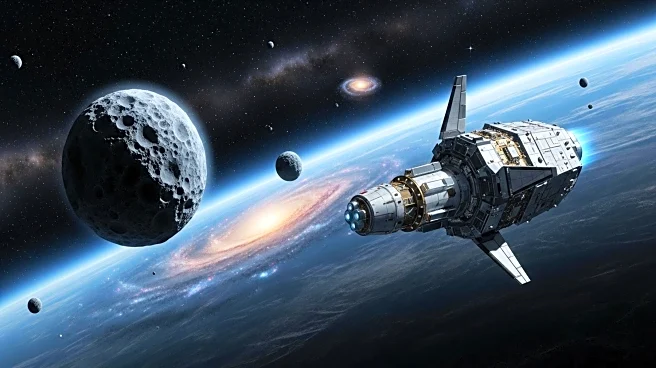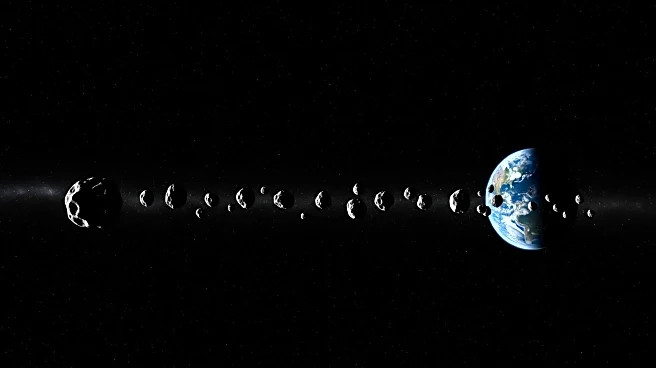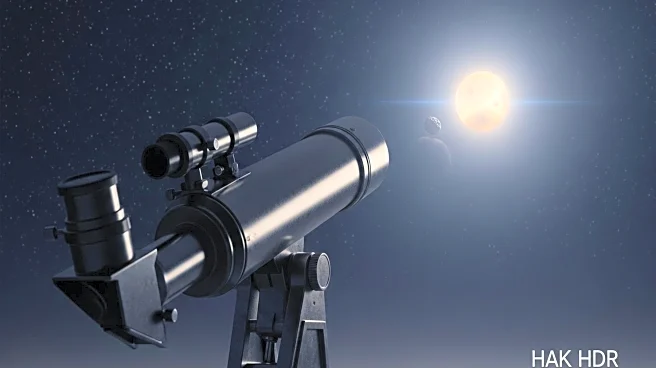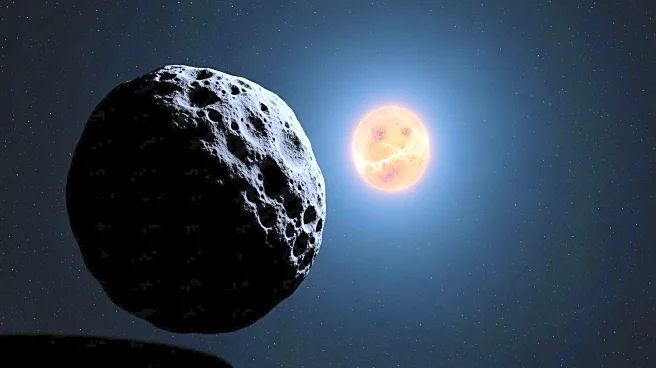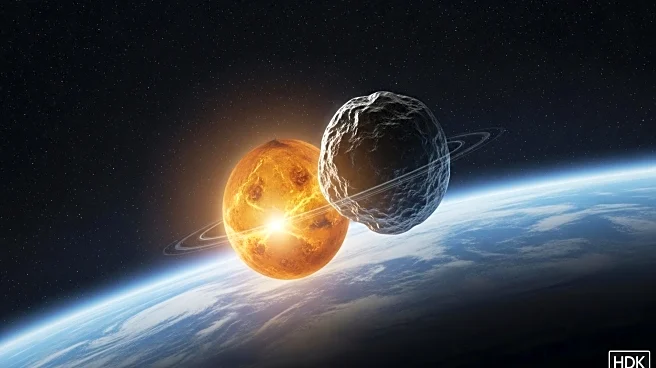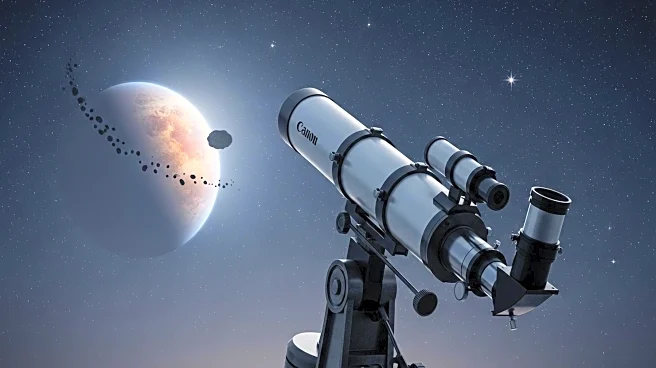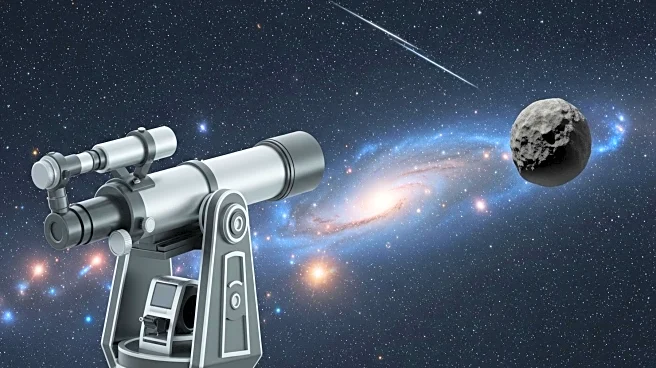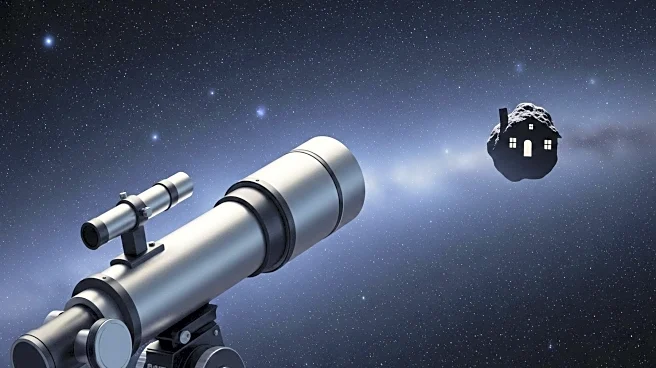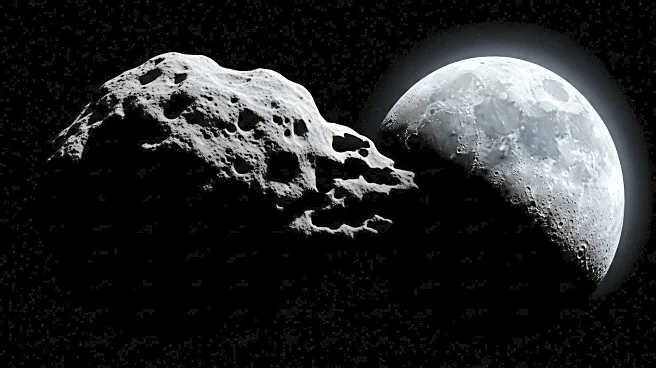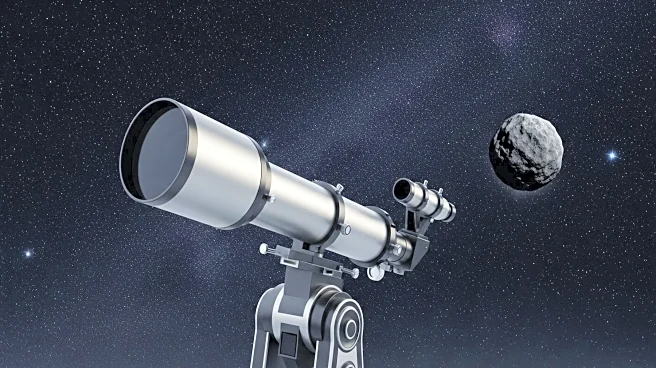What is the story about?
What's Happening?
Recent research has highlighted a potential threat from asteroids orbiting near Venus, which could collide with Earth every 12,000 years. These asteroids, known as co-orbital asteroids, are difficult to detect due to their proximity to the Sun, making them invisible to current Earth-based and space-based monitoring systems. The study, conducted by the State University of São Paulo, suggests that these asteroids could occasionally intersect with Earth's orbit, posing a significant risk of impact.
Why It's Important?
The potential threat from these asteroids underscores the limitations of current planetary defense strategies. The inability to detect these celestial bodies until they are close to Earth highlights the need for improved monitoring systems. A collision with one of these asteroids could have catastrophic consequences, emphasizing the importance of developing new technologies and strategies to detect and mitigate such threats. This research calls for international collaboration and increased investment in space monitoring to protect Earth from unforeseen dangers.
What's Next?
Scientists are advocating for a reassessment of planetary defense priorities, including the development of new detection technologies. Proposals include deploying probes closer to the Sun or placing space telescopes in inner orbits to better monitor the Venusian environment. These efforts aim to enhance our ability to detect and respond to potential asteroid threats, ensuring the safety of future generations.
Beyond the Headlines
The study raises ethical and strategic questions about humanity's preparedness for cosmic threats. It highlights the need for proactive measures and international cooperation to address invisible risks. The potential for sudden and devastating impacts from these asteroids serves as a reminder of the importance of vigilance and innovation in planetary defense.
AI Generated Content
Do you find this article useful?
